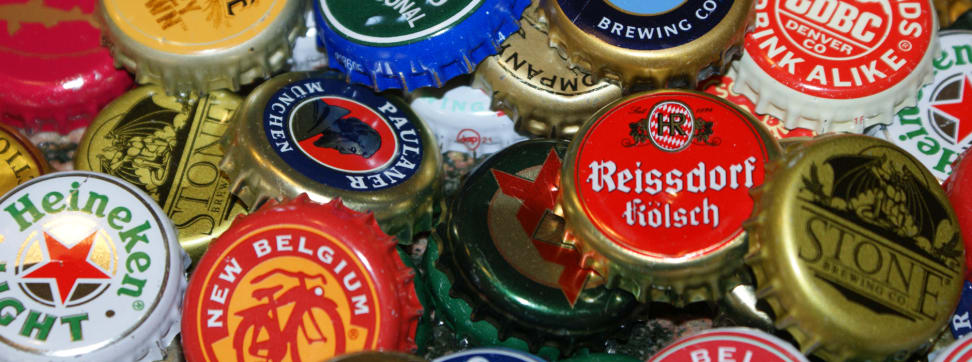Is a Bubble Brewing in the Craft Beer Industry?
Some worry that the craft beer boom is headed for a nasty hangover.
 Credit:
Credit:
Recommendations are independently chosen by Reviewed's editors. Purchases made through the links below may earn us and our publishing partners a commission.
Craft beer has enjoyed an unprecedented renaissance over the past decade. The segment is growing at an incredible rate, and the mass-market mega-brewers—Anheuser-Busch, MillerCoors—are shaking in their boots.
Over the past five years, the total market share of craft brewers has grown from 4.4 percent to 14.3 percent, according to the Brewers Association. Over the same period, the number of operational breweries exploded from just over 1,500 in 2009 to nearly 2,800 in 2013.
However, some worry that a bubble has formed, and that it's about to burst. There are simply too many brands, the theory goes, and not enough value. While the craft segment’s slice of the overall beer pie continues to expand—particularly with the help of beer-loving millennials—the entrenched dominance of the big producers is too great: They simply account for too much of the beer-drinking market.
These mega-brewers also have the advantage of multi-million dollar ad campaigns, and acquisition budgets for scooping up small competitors like Blue Moon (now part of MillerCoors) and Goose Island (now owned by Anheuser-Busch).
More and more craft breweries are opening up every year, but not at a rate that’s commensurate with demand. Bars and liquor stores have limited space to stock beer—whether on their draught lines or shelves. So how can a new brewery distinguish itself among a huge field of similar products—let alone raise the funds to get to that point? Perhaps it’s not surprising that brewery closings have also been growing in recent years.
Business Insider reports that 43 breweries shut down in 2012, up from 37 the previous year. The figure rose once again in 2013, though only mildly, with 44 closings.
“I'm really worried that a lot people are going to get into trouble in the next couple of years," John Laffler, founder of Chicago's Off Color Brewing, told BI. "I think there are a lot of rosy-colored glasses out there. A lot of people look at craft beer as a way to make money or be successful.”
But the optimists maintain that the sheer number of breweries is not itself an indication of looming collapse. They point to the U.S. wine market, which includes more than 8,000 wineries—compared to the 2,800 breweries—and is perfectly stable. Don Russell, of the Philadelphia Daily News, points out that Germany has nearly double the number of breweries per capita as the U.S.
And then there's the idea that craft breweries, though mind-bogglingly numerous, do not compete with each another in the same way that members of other over-saturated markets do. There’s a culture among both brewers and drinkers that discourages territoriality and brand loyalty, while promoting experimentation and collaboration. In other words, fans are loyal to the scene (or perhaps certain beer styles), but not brands.
That last part may be crucial to understanding this debate. Almost every economic bubble bursts because forces in the market have overvalued the supply of a particular product. This was certainly the case with the dot-com and housing securities bubbles. But it's not really the case with craft beer.
For one thing, breweries are often underfunded and hard-pressed to get adequate financing; were they fending off venture capitalists with a stick then the bubble argument might hold water. Clearly, though, that’s not the case.
Similarly, craft beer, while pricier than mass market swill, is not exorbitantly overpriced—unlike, say, the famous Dutch Tulips. Craft beer drinkers tend to be young, urban, willing to spend for quality, but often averse to the much pricier alternatives of wine and liquor. This helps keep craft beer prices within a stable price range. Some estimates even show a marked decline in the average price of beer over the last few decades (inflation adjusted), likely due to increased competition.
There are a lot of angles to be considered when talking about the beer market. It’s an extremely complex craft, presided over by an extremely complex industry. One would be ill-advised to read too much into any prognosticating—hopeful or cynical. But one thing seems certain: Craft beer isn’t going anywhere anytime soon.
{{brightcove '3327470749001'}}
Hero image: Flickr user "deegephotos" (CC BY-SA 2.0)

